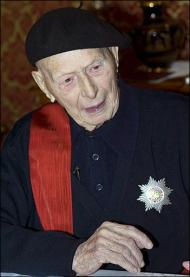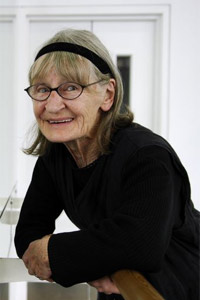By Kimberly S. Wetzel, MEDIANEWS STAFF
Their backs arched and the gentle glow of stage lights emphasizing their sleek, black leotards, the middle-schoolers stand graceful and still as they wait for the pianist to begin.
The group — dressed the part of postured, classic ballet dancers — is easily mistaken for seasoned young professionals.
But when AileyCamp ballet instructor Willie Anderson asks them to assume the pointe position, the jig is up: The students’ bodies jerk in and out of balance, their arms totter up and down, and their ankles twitch with tension.
Anderson watches and offers advice, forcing the students to hold the position long after comfort expires.
„Higher, higher!“ he commands as he moves through the wobbling crowd, tilting heads upward. „Hands up, thumbs in!“
Soon, Anderson relents and lets the youngsters drop to their heels. Onlookers exhale with smiles of relief, though the dancers do not, instead hustling into the next position.
It’s difficult to believe that most of the 11- to 14-year-old dancers never have taken a dance class before. Many also come from low-income families, have only one parent at home and live in neighborhoods that can be rough.
Regardless of such circumstances, organizers of the AileyCamp — a six-week program sponsored by the University of California, Berkeley’s Cal Performances that teaches at-risk youths dancing and other life skills — aim to mold disciplined, focused, well-behaved young adults who develop a passion for the arts through holistic learning. Founded in 1989 in Kansas City by legendary dancer and choreographer Alvin Ailey, AileyCamp is a national program that helps youths learn self-expression and self-respect through dance and personal development classes. The AileyCamp overseen by Cal Performances is the only one of its kind on the West Coast.
This year, local organizers picked 80 students out of hundreds of applicants from West Contra Costa County, Oakland, Berkeley and Albany to take part in the African, ballet, modern and the program’s touchstone jazz dance classes.
Those selected must exhibit some or all of the camp’s at-risk criteria. Students receive transportation, uniforms, meals, dance lessons and personal development classes in which they learn about such topics as health, responsibility, self-esteem, conflict resolution and drug awareness.
„What we teach them is there are more important ways to behave,“ said Shawn Nealy, personal development instructor for the local program. „If they don’t remove any blockage that they have, they can’t perform well on stage.“
The students take classes Mondays through Thursdays, leaving Fridays open for field trips where they test out their swim strokes, bowl for a strike or learn sailing instruction through the OCSC Sailing School in Berkeley.
AileyCamp is free for its students, funded through corporate and private donations. It climaxes each year with a student dance production under the lights at UC Berkeley’s Zellerbach Hall. This year’s performance, which is free and open to the public, is scheduled for
Aug. 2.
„For a lot of them, they come in with a lot of challenges for kids their age,“ said program director David McCauley. „At the end of the camp, there’s often a huge change in many of them.“
Those changes include more confidence, improved behavior at school and a more worldly view, camp organizers say.
The curriculum is challenging: The students take four dance classes a day, and their instructors don’t tolerate a lack of focus.
„They just haven’t been exposed to other ways of walking in the world, other ways of thinking,“ Nealy said. „We really want to transform their lives.“
„You’re not listening!“ modern dance instructor M’bewe Escobar yells during a recent practice. „Go back! You start with a twist! You can do it, you just have to focus!“
Despite the hard work, the students say they enjoy it.
„I’m having a lot of fun,“ said Oakland resident Beautiful Spears, 12. „I really like the dance classes and am learning so much.“
Though AileyCamp appealed mainly to girls in past years, recent efforts to get boys involved have paid off, with 22 participating this year. Boys are not required to wear leotards but must wear black shorts and a white T-shirt.
„They get into it,“ McCauley said of the boys. „Dancing calls for a different set of motor control, but the instructors try to liken it to sports.“
The boys enjoy other portions of the program, too. On a recent sailing excursion, their „male“ side was apparent.
„That’s where pirates fight each other with swords,“ 11-year-old Oakland resident Sidney George Jr. said as he glanced up at the sails on their 82-foot schooner for the day, Seaward.
For many of the students, the sailing excursion is one of the highlights of the camp. Deckhands teach them sailing lingo, let them raise the sails and show them sea critters.
„Ooh, what the heck is it?“ 12-year-old San Pablo resident Mia Stewart shrieked as she wiggled some sea sponge in her palm. „It feels all gooey!“
Although many have never been on a boat and several are usually nervous beforehand, once they conquer their fear of the water, camp organizers say, they can see the immediate transformation.
The same is true of dance class — the children really start to get it.
„Some of them are out of their element and don’t know what to expect,“ Nealy said.
Reach Kimberly S. Wetzel at 510-262-2798 or kwetzel@cctimes.com.








